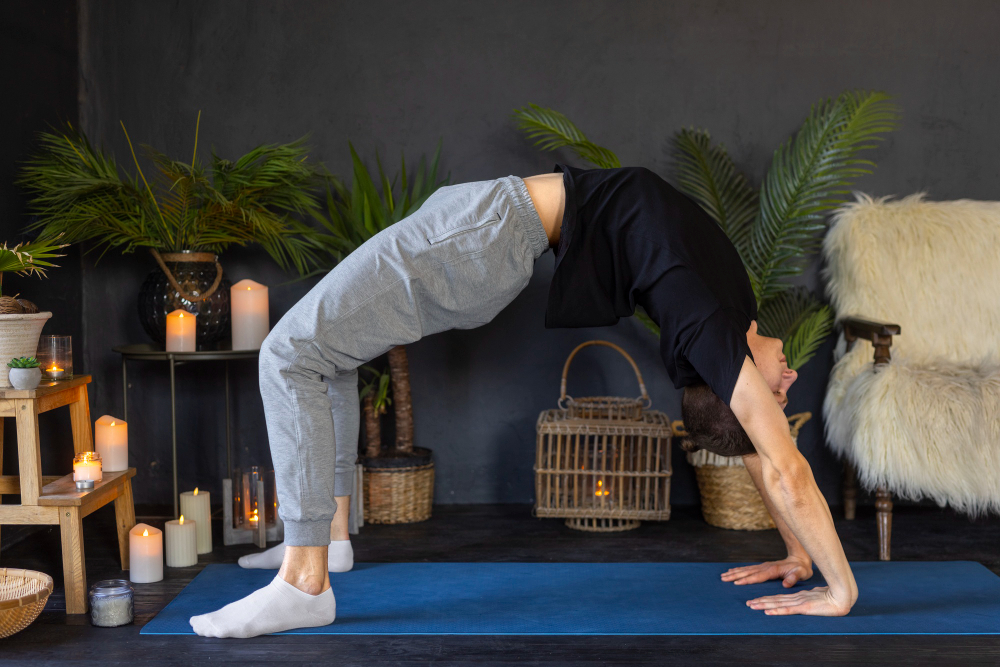Depression is a common mental health condition that affects millions of people worldwide. It can cause sadness, low energy, and loss of interest in daily life. However, there are natural ways to manage depression. Yoga poses to help manage depression can support your mental wellness. Along with yoga, naturopathy and good nutrition may also improve your mood. In this blog, you will learn about yoga for depression, natural ways to manage depression, and wellness tips for mental health.
Understanding Depression
Depression is more than just feeling sad. It can affect your thoughts, feelings, and actions. Many people with depression may notice: Feeling sad or empty most of the day Loss of interest in activities once enjoyed Changes in appetite or weight Difficulty sleeping or sleeping too much Low energy or fatigue Trouble concentrating Feelings of guilt or worthlessness
Often, depression can make daily tasks hard. It may be caused by stress, genetics, or changes in brain chemicals. Sometimes, life events or health problems can trigger depression. If left untreated, it can affect work, school, and relationships.
The Role of Yoga and Naturopathy in Managing Depression
Yoga is a mind-body practice that combines movement, breathing, and relaxation. Studies show that yoga for depression can help reduce stress and improve mood (source: WHO, PubMed). Yoga poses for mood improvement may boost brain chemicals that make you feel good. In addition, yoga helps you relax and sleep better.
Naturopathy uses natural methods to support health. For example, eating a balanced diet and spending time in nature can help your mind. When you combine yoga with good nutrition, you may notice better results. Both yoga and naturopathic practices focus on the whole person, not just symptoms.
Best Yoga Poses for Depression
Some yoga poses are especially helpful for managing depression. These poses are gentle and easy to try at home. Always listen to your body and stop if you feel pain. Here are some of the best yoga poses for depression:
1. Child’s Pose (Balasana)
Kneel on the floor and sit back on your heels. Lower your forehead to the mat and stretch your arms forward. Breathe deeply and relax your body.
Benefits: Calms the mind, relieves stress, and soothes anxiety.
Safety Tip: If you have knee pain, place a cushion under your knees.
2. Bridge Pose (Setu Bandhasana)
Lie on your back with knees bent and feet flat on the floor. Place your arms by your sides. Lift your hips toward the ceiling while pressing your feet down. Hold for a few breaths, then lower your hips.
Benefits: Opens the chest, boosts energy, and lifts mood.
Safety Tip: Avoid if you have back or neck injuries.
3. Cobra Pose (Bhujangasana)
Lie on your stomach with hands under your shoulders. Press your palms down and gently lift your chest. Keep your elbows close to your body. Look forward and breathe slowly.
Benefits: Improves posture, relieves fatigue, and increases confidence.
Safety Tip: Do not over-arch your back. Stop if you feel pain.
4. Legs-Up-the-Wall Pose (Viparita Karani)
Sit close to a wall and lie on your back. Swing your legs up the wall and rest your arms by your sides. Close your eyes and breathe deeply.
Benefits: Reduces stress, calms the mind, and helps with sleep.
Safety Tip: Use a folded blanket under your hips for comfort.
5. Cat-Cow Pose (Marjaryasana-Bitilasana)
Start on your hands and knees. Inhale, arch your back (Cow Pose), and look up. Exhale, round your back (Cat Pose), and tuck your chin. Repeat several times, moving with your breath.
Benefits: Releases tension, improves breathing, and balances mood.
Safety Tip: Move slowly and avoid jerky motions.
6. Mountain Pose (Tadasana)
Stand with feet together and arms at your sides. Press your feet into the ground and lengthen your spine. Breathe deeply and relax your shoulders.
Benefits: Improves posture, increases focus, and grounds the body.
Safety Tip: Stand near a wall if you feel unsteady.
7. Seated Forward Bend (Paschimottanasana)
Sit with legs straight in front of you.Inhale, lengthen your spine, and reach forward toward your feet.Hold your shins or feet and breathe gently.
Benefits: Calms the mind, relieves mild depression, and stretches the back.
Safety Tip: Bend your knees slightly if your hamstrings are tight.
Lifestyle and Nutrition Tips
Along with yoga, healthy habits can help manage depression. Here are some naturopathic and nutrition tips:Eat a balanced diet with fruits, vegetables, whole grains, and lean proteins.Include foods rich in omega-3 fatty acids, like walnuts and flaxseeds.Drink enough water throughout the day.Limit processed foods, sugar, and caffeine.Spend time outdoors in natural sunlight.Practice deep breathing or meditation daily.
These wellness tips for mental health can support your mood and energy.
Prevention and Self-Care
Taking care of yourself every day can help prevent depression. Try these self-care strategies:Set a regular sleep schedule and get enough rest.Stay active with gentle exercise or walking.Connect with friends or family for support.Write in a journal to express your feelings.Practice mindfulness or gratitude each day.
Even small changes can make a big difference over time.
When to Seek Professional Help
Sometimes, self-care and yoga are not enough. If you notice these signs, it is important to seek help:Feeling sad or hopeless most daysThoughts of self-harm or suicideUnable to do daily tasksDepression lasting more than two weeks
Always reach out to a healthcare provider or mental health professional. Early support can help you recover faster.
Conclusion & Call-to-Action
In summary, yoga poses to help manage depression can support your mental wellness. Along with yoga, good nutrition and self-care are important. However, if you need more support, do not hesitate to consult a healthcare professional or yoga therapist for personalized advice. Your mental health matters, and help is always available.



